Campfire Audio’s latest TOTL hybrid IEMs trade neutrality for tasteful coloration.
- Excellent build, fit, and isolation
- Dense, physical bass response with a good sense of slam
- Some of the best dynamics among multi-driver hybrids
- End-to-end extension
- Near-holographic staging, precise imaging
- Bonneville’s design may be too bland for some
- Bass-bleed into lower-mids mask some low-level details
- “Chesty” male vocals in some tracks
- Depending on the source and fit, the 7kHz peak may be noticeable
Campfire Audio has a rich history of offering some of the most popular TOTL IEMs around. The OG Andromeda have become bonafide cult-classics, whereas the likes of Solaris and Ara have their niche and following.
Named after the Bonneville Dam located east of Portland, Oregon, the Campfire Bonneville are the latest entry in the brand’s hybrid lineup and part of the Chromatic series.
As the name implies, the colorways can be playful, and so can the tuning.
The Bonneville do not aim for neutrality or “reference” tuning. Rather, the idea is to offer tasteful coloration that can reveal certain nuances and emotions in the music.
How close does Campfire Audio get to the goal, and what concessions are made to achieve that?
Let’s find out.
Unboxing and First Impression
Design and Build
The Bonneville sport Campfire Audio’s patented “Solid Body design” where the drivers are arranged within a 3D-printed acoustic chamber.
The resin shell body has a near custom-like fit even for the Universal model. Campfire offers the option for custom shells as well, with Audiophile (shallower nozzle) and Performer (longer nozzle) specific fittings available.
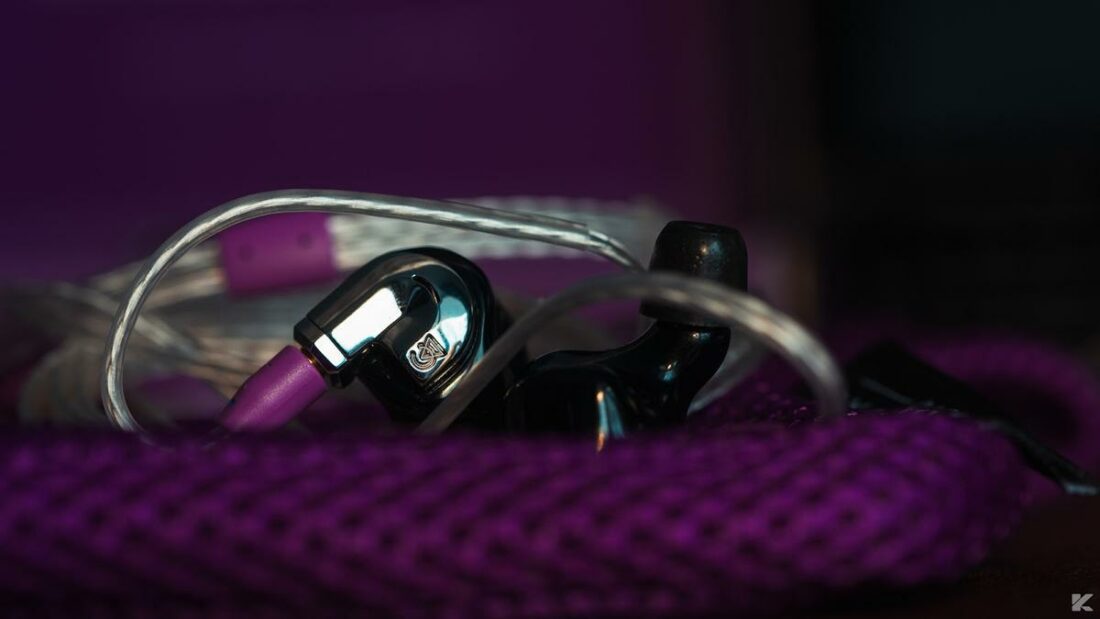
One point of contention might be the bland look of the shell, as competitors offer hand-painted shells in the TOTL space, while some go for a transparent inner shell that displays the pretty interiors.
Campfire spiced things up by adding a mirror-polished, stainless steel faceplate. This steel piece adds some character to the shell design but can get smudged up quickly, so keep a cleaning cloth handy.
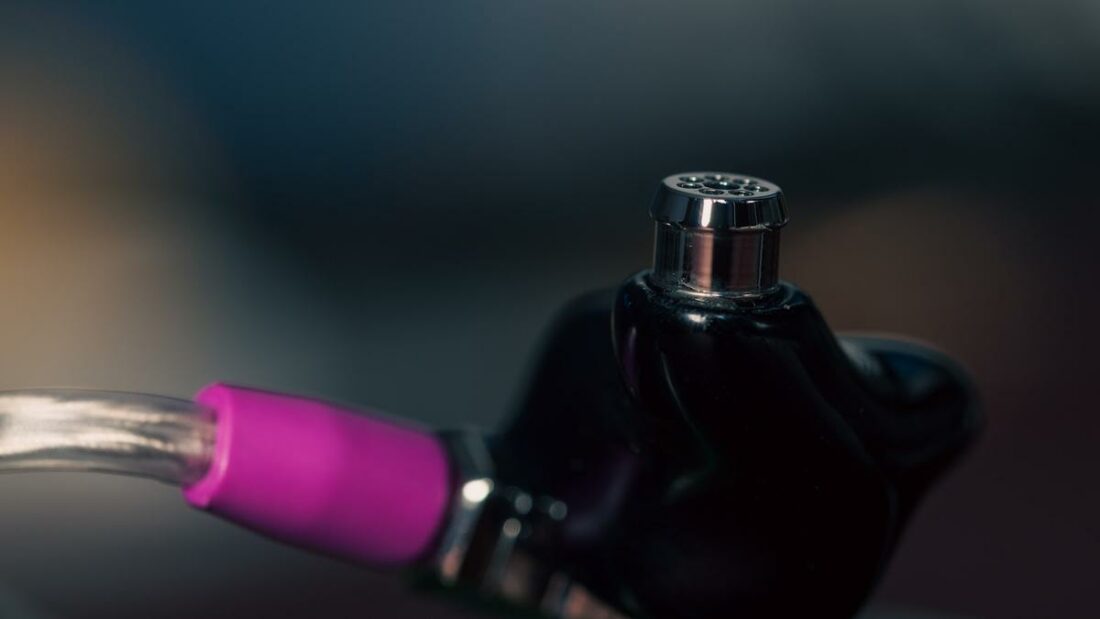
Bonneville’s nozzle is on the thicker side and, when combined with a deep fit, can cause discomfort for those with smaller-than-average ear canals. Finally, the mmcx connector is a staple for Campfire Audio.
The robust build with a utilitarian design that trades flashy faceplates for something more practical.
Cable
The stock cable is similar to the Timestream cable you get with Campfire Audio Trifecta. It’s an eight-core, flat-braided cable with slightly stiff sheathing. This stiffness can be bothersome for those who want ultimate flexibility, but I’ve found it manageable.
The best aspect of this cable is how easy it is to detangle. Due to the flat braiding, kinks rarely form. I also found the connectors to be good quality, so looking for aftermarket options is unnecessary.
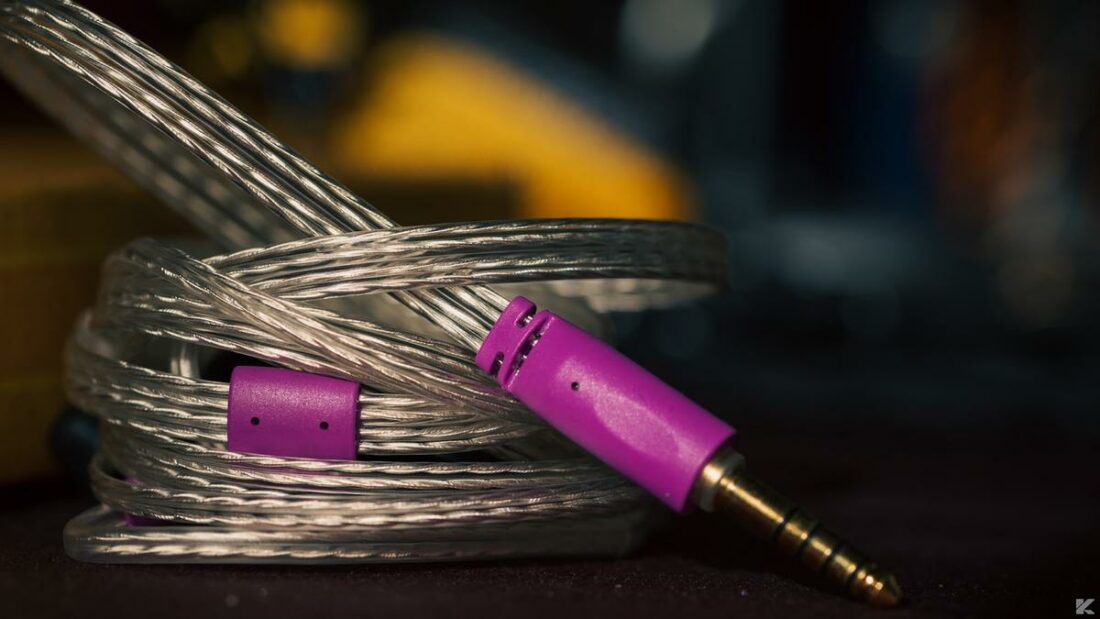
Comfort
Bonneville offers the best isolation when paired with foam tips and inserted deep into the ear canals. However, due to the thick nozzle, a deep fit may be an issue if you have small ear canals.
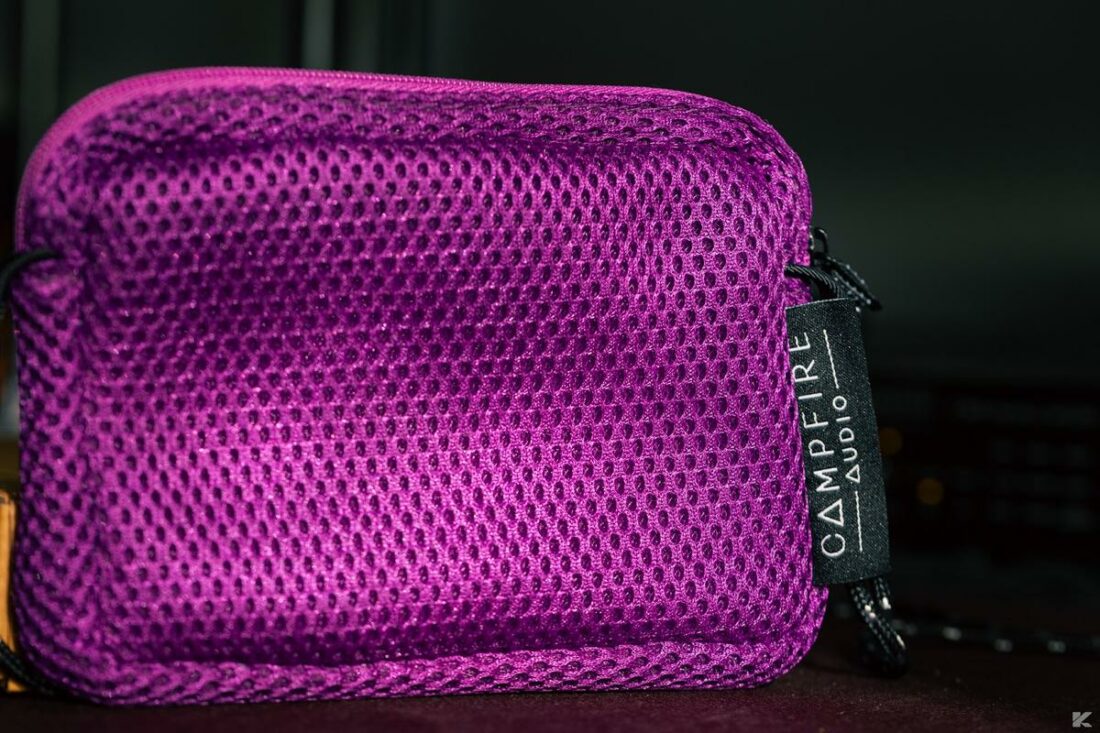
Under the Hood
The Bonneville utilize a quad-driver hybrid setup, with a single 10mm dynamic driver handling the lows, and three balanced armature drivers tackling the mids and the highs.
Moreover, the updated DD is a dual magnetic circuit design, meaning an external and internal magnet circuit exists. Such dual magnet and dual cavity designs yield better driver control when reproducing bass frequencies.
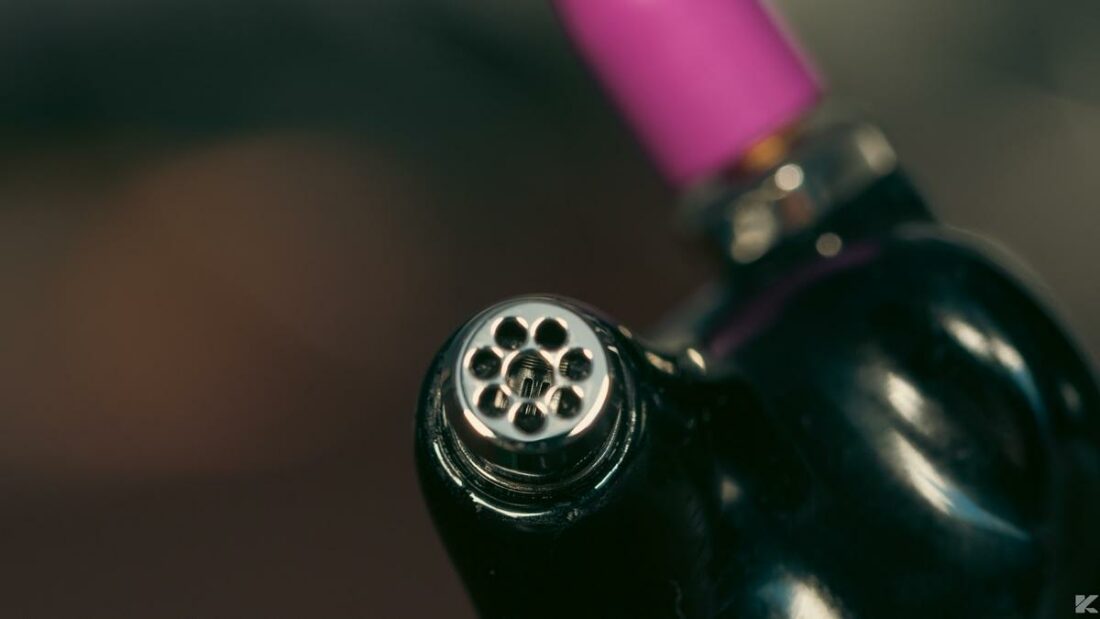
Unlike most hybrid driver IEMs, Campfire Audio does not go for dedicated acoustic tubes that exit at the nozzle. Instead, the nozzle is also a part of the entire acoustic chamber. In the case of Bonneville, the BA driver handling the treble is placed within the nozzle itself to reduce the distance from the eardrum.
Finally, the midrange BA driver is a dual-diaphragm unit from Knowles. This latest generation of BA drivers have higher SPL and lower distortion, which aid in accurately rendering spatial cues and positions. All in all, a very competent driver setup and the updated dynamic driver is especially interesting.
How Do the Campfire Bonneville Sound?
The general tuning of the Bonneville can be labeled as “U-shaped,” albeit that is an oversimplification.
Campfire Bonneville eschew the traditional tuning “targets” and do their own thing. There is noticeable heft in the mid-bass, and the upper-mids are restrained, while the treble frequencies get a controlled boost.
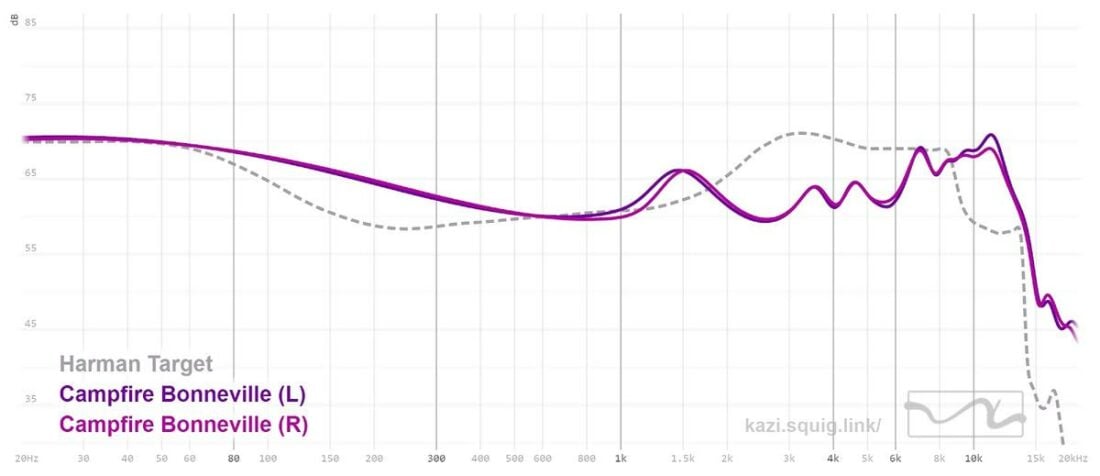
Bass
Bonneville’s low-end strikes with some serious heft. The mid-bass sounds full, with heavy snare hits showcasing their characteristic “slam.” Sub-bass rumble is strong and, on the right track, can hit like a speeding truck.
In Polyphia’s Playing God, for example, the sub-bass rumble is voluminous while keeping up with the pace of the track. Note separation is excellent, and the transition from sub-bass to mid-bass is gradual instead of the abruptness that Harman-tuned IEMs often showcase.
On the other hand, the upper-bass is boosted more than I prefer. The bass texture is great but falls short of class leaders. These are the only factors that make Bonneville’s otherwise excellent bass response less than perfect.
Midrange
The midrange is the one area where the Bonneville do not fully align with my tastes.
The boosted upper-bass results in some bass-bleed into lower-mids. This thickens the midrange noticeably, and coupled with the dip in the upper-midrange a sense of warmth and lushness permeates throughout.
While such laid-back tuning works well for those averted to upper-mid peaks, it can be too mellow at times. Moreover, the strange peak around 1.5kHz can lead to some “chestiness” in male vocals, as heard in Damien Rice’s Cannonball.
Strings and guitar riffs take a back seat, while keyboards and pianos can sound dampened on the upstroke. Soaring vocals can sound restrained, reducing the sense of engagement.
In the end, if you are after articulated vocals and a tuning that brings strings and guitar riffs to the forefront, the Campfire Bonneville won’t fit that bill. On the other hand, those looking for a relaxed presentation, no matter the recording, will feel right at home here.
Treble
The Bonneville’s treble response is highly dependent on the tips used and the insertion depth of the IEMs.
With a shallow fit, the mid-treble peak around 7-7.5kHz will be very noticeable, giving rise to slight sibilance. Deeper insertion pushes this peak around 9kHz and mostly balances things out.
However, for IEMs like Bonneville that require deep insertion (and are even designed for such), an intentional shallow fit just for the sake of measurements can be misleading. For that reason, I had to insert the IEMs deeper than normal into the coupler for the measurements shown above.
Foam tips also tend to reduce airiness, while silicone tips will have less of an impact there. As such, tip rolling is recommended. I went with a size smaller than usual to aid in a deeper fit.
Once all that’s settled, the treble on the Bonneville sounds about perfect. There is a good amount of air up top, resulting in cymbal hits resonating without abruptly disappearing. The treble is sparkly without being harsh and devoid of the dreaded “BA timbre” for the most part.
In some tracks, the upper-treble zing can be too noticeable, but usually, it is balanced out by the thick bass response. Overall, it is excellent treble tuning that can eke out many minute details.
Technicalities
Overall resolution is excellent in the bass and treble regions. Some low-level details are masked in the midrange, however.
Staging and imaging are phenomenal. There is a sense of true “holography” as instruments can pop up from any direction. A case in point is Amber Rubarth’s Strive.
The Bonneville display excellent layering of backing vocals and instruments. The overall sense of dynamism is superb, with even microdynamics (subtle shifts in volume) being vividly portrayed, which is a pain point for many hybrid IEMs.
Pairing notes
While the Bonneville are quite easy to power, they exhibit hiss with sources with higher than nominal noise floor, e.g., iFi Hip DAC3. Fortunately, in the case of Hip DAC3, the IEMatch switch takes care of the issue, but it is something to be aware of for sources without such an impedance-matching mechanism.
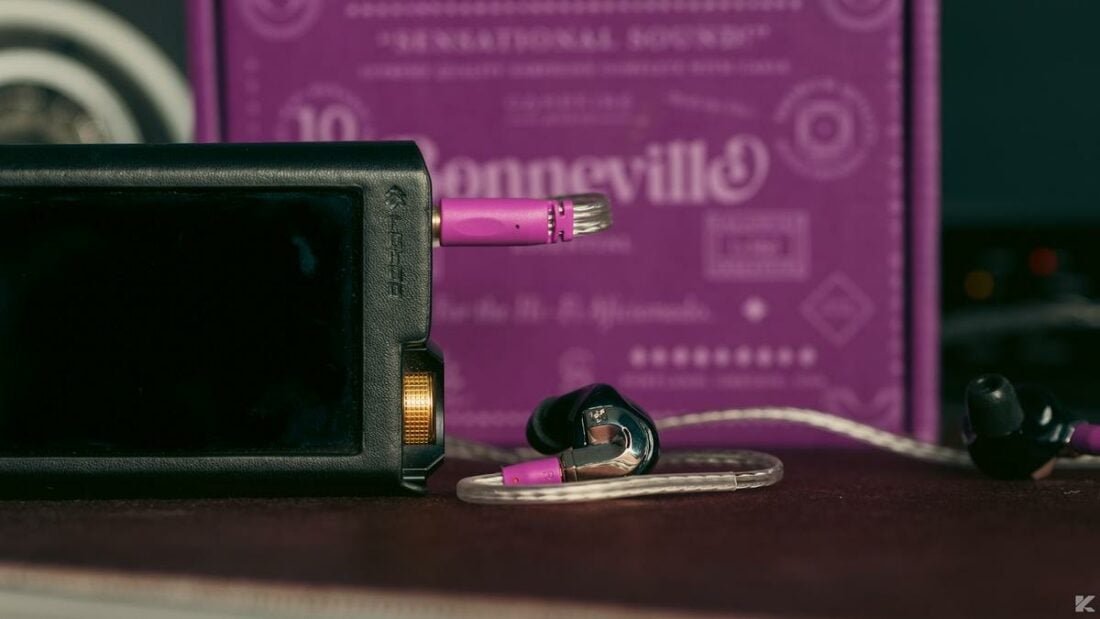
The Lotoo PAW Gold Touch has a very low noise floor and paired well with the Bonneville, albeit the bass was not as controlled as the LPGT used in conjunction with an external amp.
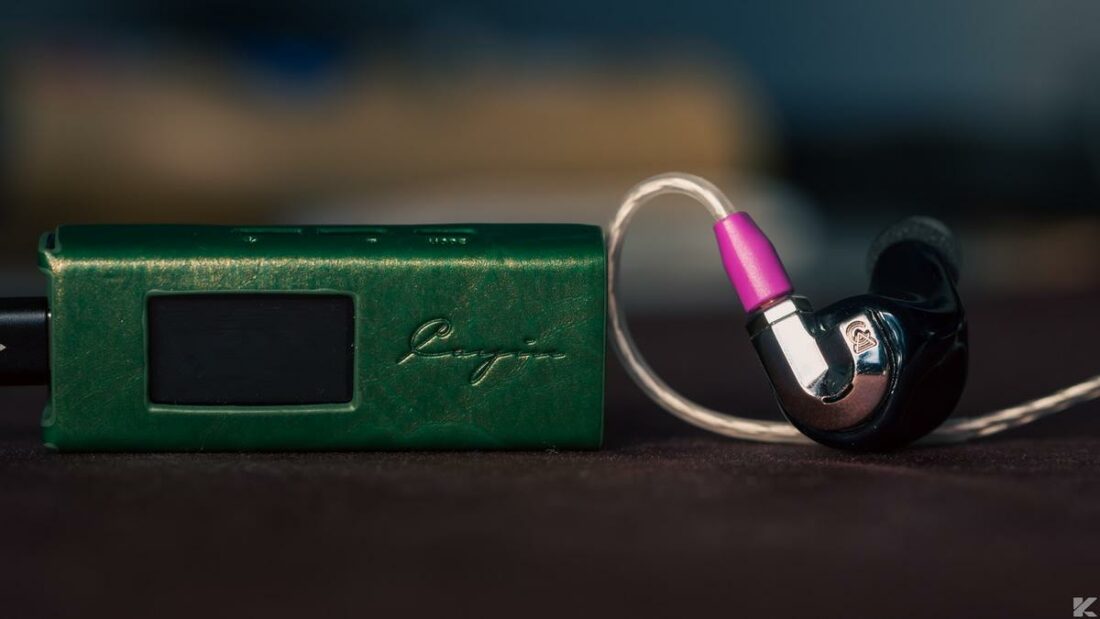
In terms of dongles, the Cayin RU7 is a fantastic match with the Bonneville. The treble is silky smooth, and the bass has great control, even though the overall sense of physicality is slightly reduced. Stage width is exceptionally wide with the RU7, and overall, this is a highly recommended pairing for Bonneville owners or potential buyers.
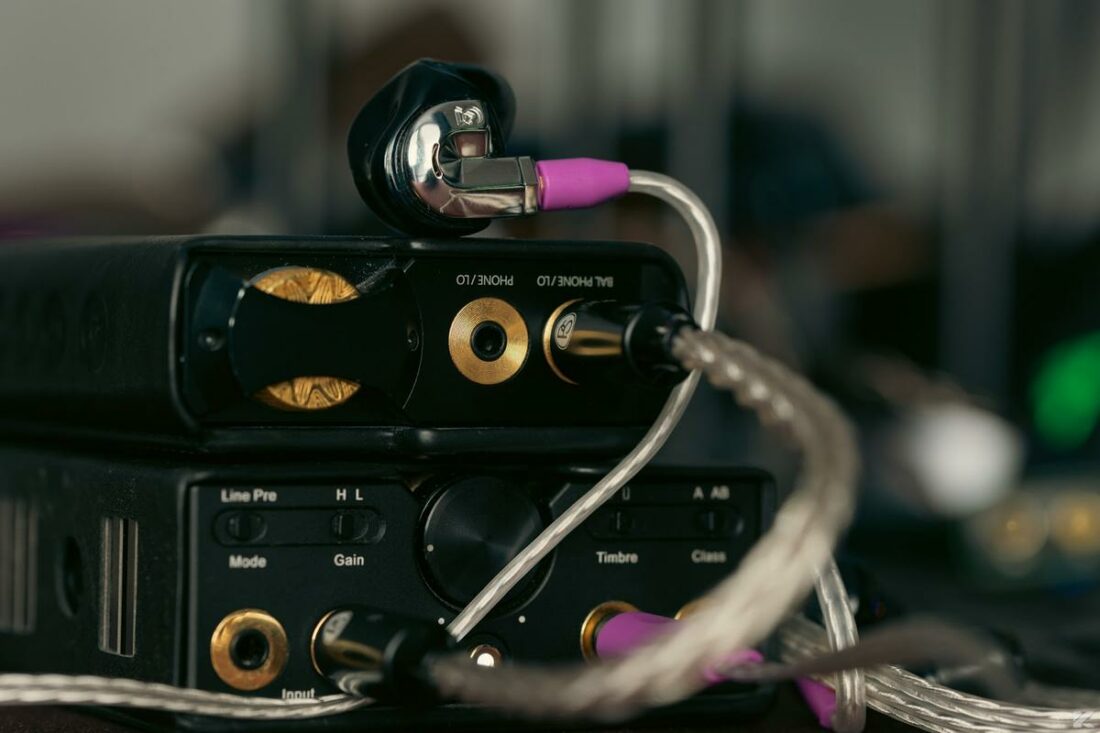
The absolute best pairing I experienced with the Bonneville is the Cayin C9 in tube mode, coupled with the LPGT. Many will consider this setup “overkill,” and I agree, but such is the nature of the beast when you are after the last bit of performance.
The layering and staging are exceptional in this setup, and the bass is noticeably tightened (a phenomenon of the C9 that I have noticed across many IEMs). Sonic bliss, in a nutshell.
Comparisons
Campfire Bonneville vs Sony IER-Z1R
This comparison is highly requested, so let’s delve into it. The IER-Z1R are dual dynamic + 1BA setup, while the Bonneville has one extra BA driver. The build is more “substantial” on the IER-Z1R, while Bonneville are far more comfortable for long sessions.
As for the sound, the bass response of the IER-Z1R is still one of the best in their class. The Bonneville cannot quite match the subterranean depth and texture of the bass that Z1R can exhibit. They get close, but I’d still place the Z1R just a few paces ahead.
The midrange is where things are more of a wash. IER-Z1R’s midrange is extremely bland sounding, while the Bonneville could do with better male vocals. In a pinch, I prefer the Bonneville’s midrange over the IER-Z1R, but it’s not a huge gap.
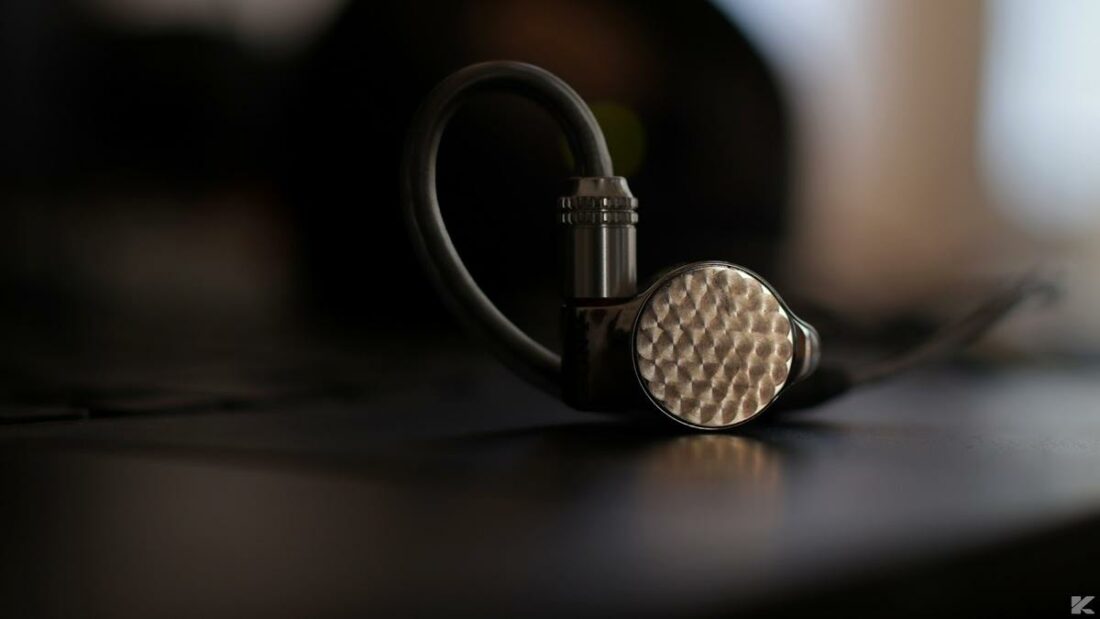
The treble is similarly excellent on both, while imaging is more precise on the Bonneville. Macrodynamic punch is superior on the Sony flagship, while microdynamics are better rendered on the Bonneville.
Overall, I consider the Bonneville is a valid alternative to the Z1R without the fit issues.
Campfire Bonneville vs Sennheiser IE 900
Sennheiser’s single-dynamic driver flagship, the IE 900, have been my daily driver for the better part of the last year. The fit is phenomenal (especially when paired with the Custom Comfort tips), and the sound they produce belies their diminutive footprint.
In terms of build, the Bonneville are the opposite. Due to the higher driver count, their larger shells do not allow as inconspicuous a fit as the IE 900. Then again, we are here primarily for the sound differences, and this is where things get interesting.
The IE 900 have a similarly subdued upper-midrange, but the treble range is noticeably brighter. Moreover, the sub-bass is not as boosted as on the Bonneville. Despite that lack of sub-bass focus, IE 900’s bass is some of the best.
The sheer physicality is combined with a sense of dexterity that is rare even years after IE 900’s release. The Bonneville has more impact in EDM and pop tracks, though, and tracks with a sub-bass focus.
I prefer the midrange tuning on the IE 900 comparatively. The chestiness in the male vocals is not an issue on the Sennheisers, unlike with the Bonneville, and string instruments have more bite.
It’s the treble that will divide opinions. With the Custom Comfort tips, the IE 900 treble smooths and has great extension. Unfortunately, regular tips sometimes make the treble sound too bright and “sizzly”. This is an issue that Bonneville avoid for the most part.
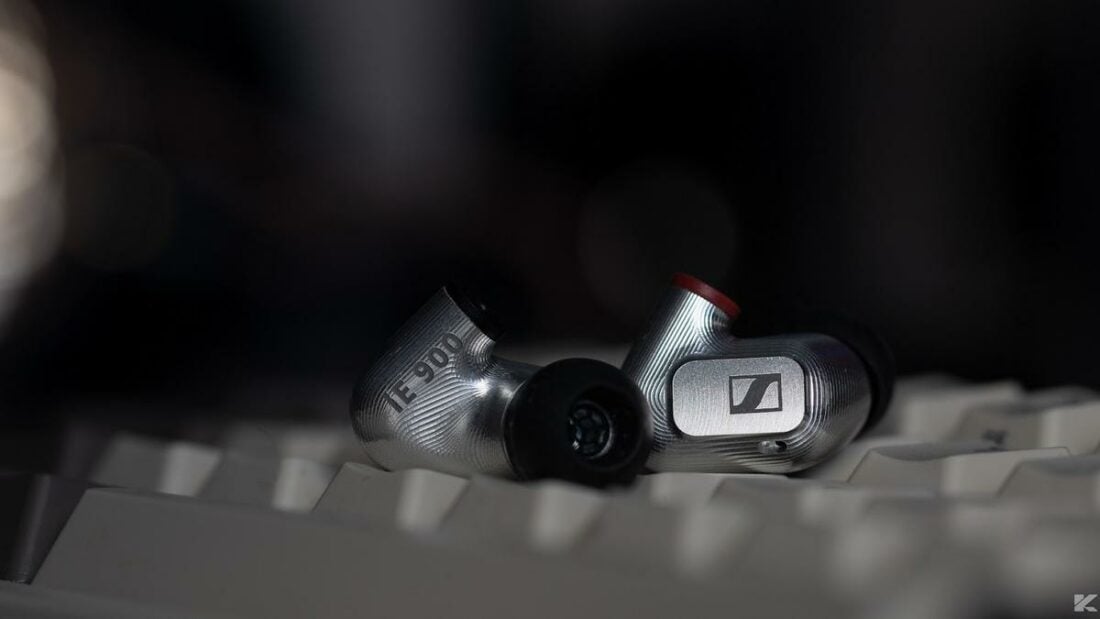
Staging is deeper on the Bonneville, while the IE 900 have a slightly wider placement of instruments. Dynamics are class-leading on both iEMs, while the overall sense of resolution is slightly higher on the IE 900, likely due to extra treble emphasis.
In the end, I’d happily keep both of these IEMs in my collection. If you are treble averse, then the Bonneville are better suited, while those preferring a hassle-free fit should gravitate towards the IE 900.
Where to Buy
Who Should Buy This?
Those looking for a lush, warm, and laid-back tuning with excellent treble extension and immersive headstage.
Final Thoughts
The Campfire Bonneville offer a solid, all-around package. The bass and treble go for excitement without veering into “overbearing” territory, and the midrange tuning is as safe as it comes.
Overall technicalities are also very competitive considering their peers, and the stock accessories are suitable to get you started. I do advise an audition before purchase, as the thick nozzle might be an issue if you have small ear canals.
Neutral-heads will feel disappointed, as the Bonneville do not mimic any of the academic tuning targets and, by that metric alone, will be considered a “no-go” for certain audiences.
I tend to be less dogmatic, and the coloration on the Bonneville is tastefully done. Apart from the qualms about the midrange tuning, I have no reservations about recommending the Bonneville. As long as you tinker a bit with the right choice of ear tips, these will serve you tremendously well as your primary “TOTL” IEMs.
Company Overview
Established in 2015 in Portland, Oregon, Campfire Audio primarily operates in the premium segment of IEMs and headphones. An ardent focus on craftsmanship and artwork separates Campfire Audio from the rest of the industry. The Andromeda and Solaris are two of the most well-known TOTL IEMs from the brand, garnering a cult following years after their release.
What’s in the Box?
- Campfire Bonneville IEMs
- Carrying pouch
- 4-wire SPC cable
- 6 pairs of tips
- Cleaning tool
Technical Specifications
- Form: (Open, Closed, IEM, TWS, Portable, Desktop, DAC, Amp, etc.)
- Driver: 1 x 10mm dynamic driver + 3 BA
- Impedance (Ohm): 29 ohms
- Sensitivity (dB): 94 dB/mW
- Weight (g): 9g
- Frequency Response (Hz): 5 Hz – 20 KHz
- Removable Cable: Y
- Source Jack: 4.4mm
- Cup/Shell Jack: mmcx
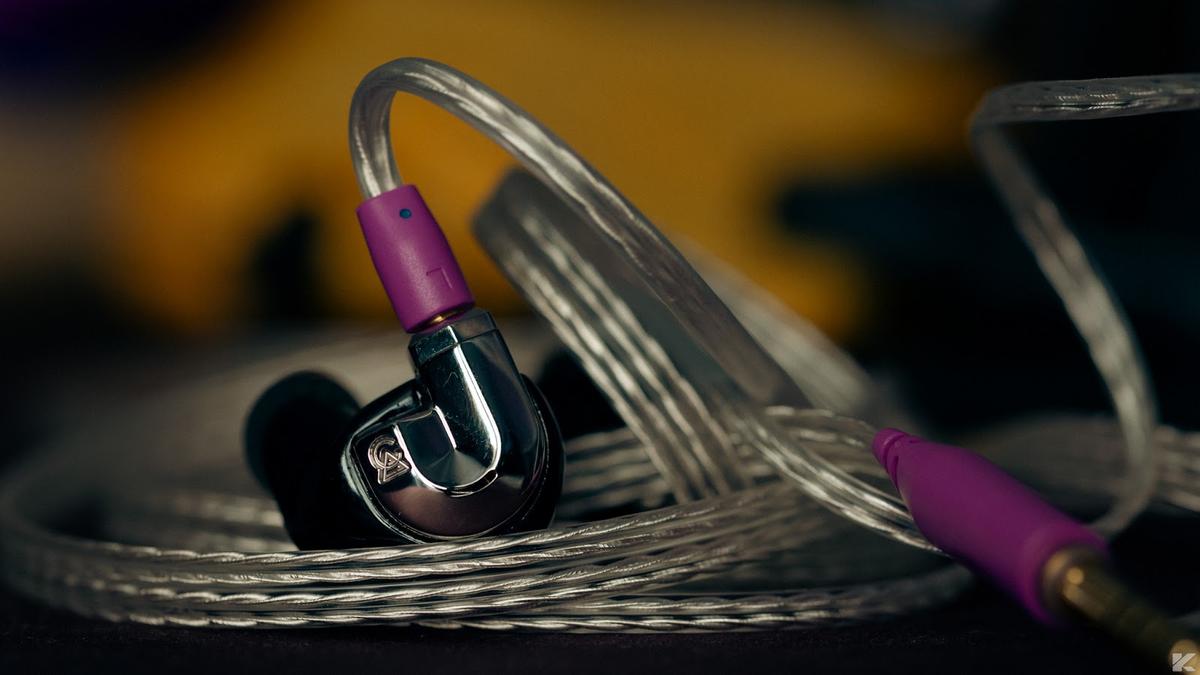
“Named after the Bonneville Dam located east of Portland, Ohio, the Campfire Bonneville“
It’s Portland, OREGON, not Ohio lol